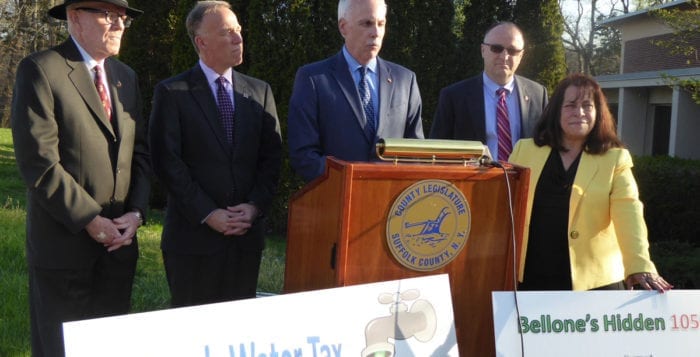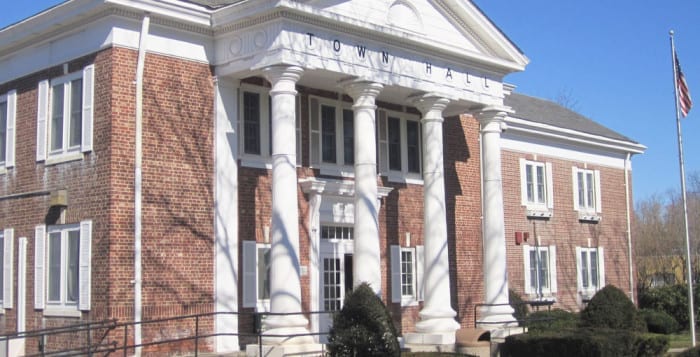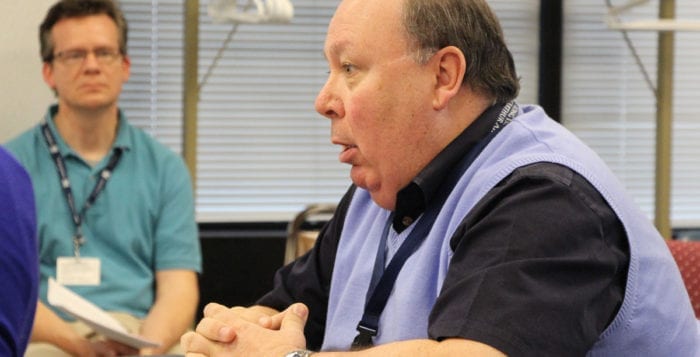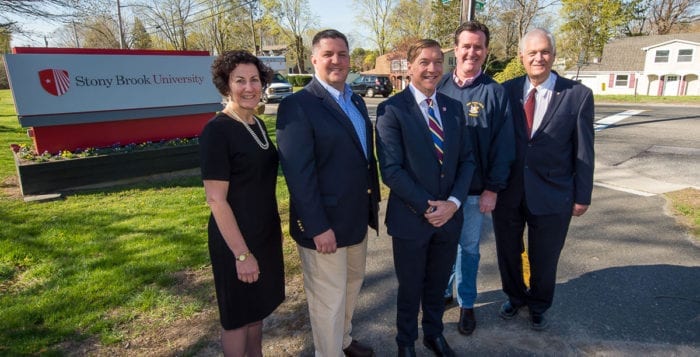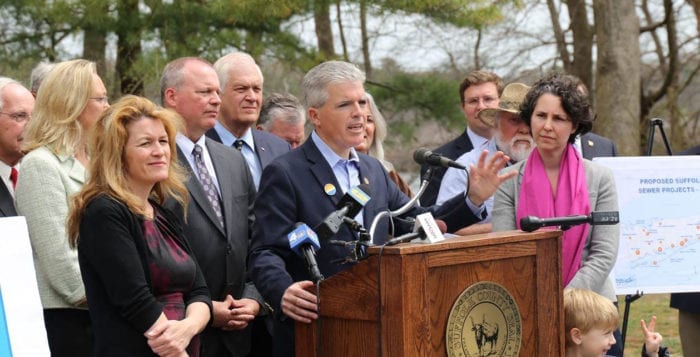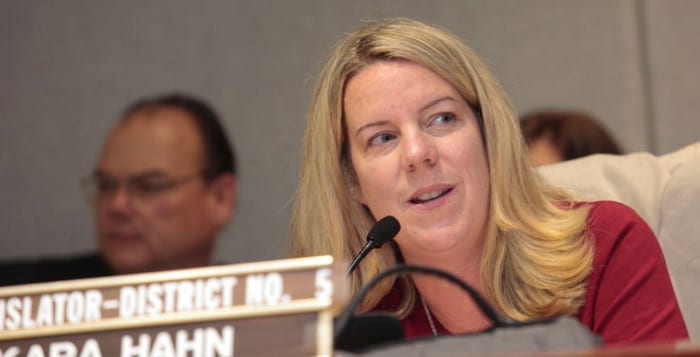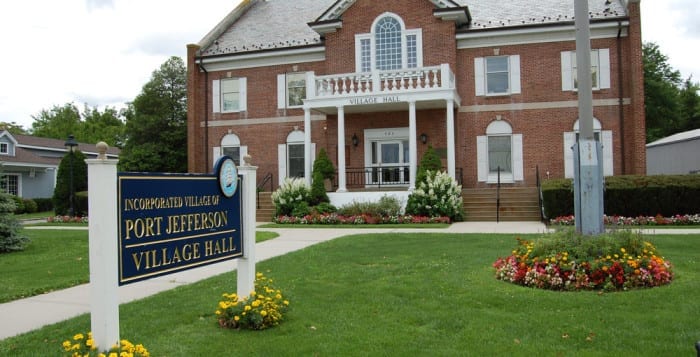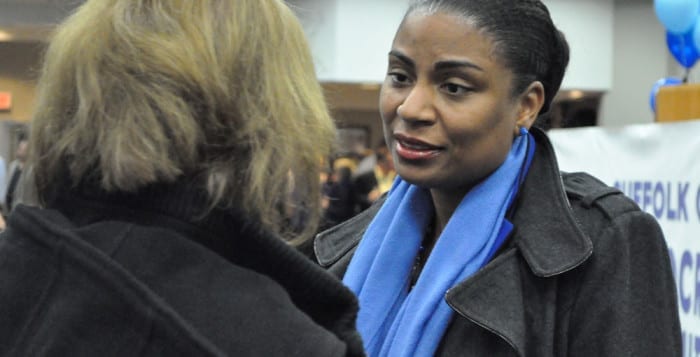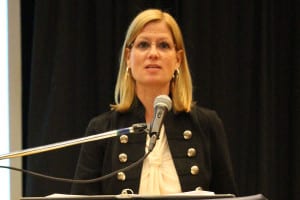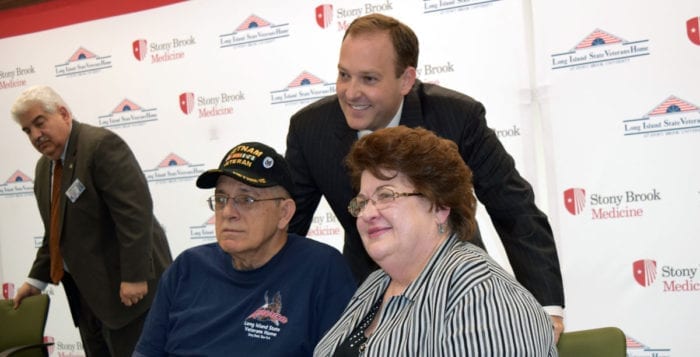Suffolk Republicans said the county executive’s water quality plan stinks.
County Executive Steve Bellone (D) unrolled a proposal last week that would allow voters to decide whether or not they would pay an extra $1 per 1,000 gallons of water to address nitrogen pollution in drinking and surface water across the region. And while some environmentalists heralded the plan, Suffolk Republicans said it would be unfair to the taxpayer and cost more than what Bellone might lead residents to believe.
Suffolk County Legislator Kevin McCaffrey (R-Lindenhurst) joined with other members of the Republican Caucus last Wednesday at the county headquarters in Hauppauge to speak against Bellone’s proposal. Standing with him was Legislator Rob Trotta (R-Fort Salonga), who accused Bellone of using the water rate increase as a source of revenue to help balance the county’s $1.2 billion debt.
“This is yet another attempt by Steve Bellone to get into the pockets of taxpayers,” Trotta said. “It is a ploy to use water protection as a means of covering for his mismanagement of county finances.”
His proposal would establish a water quality protection fee that would fund the conversion of homes from outdated septic systems to active treatment systems, the county executive said. He estimated the $1 surcharge would generate roughly $75 million in revenue each year to be solely dedicated to reducing nitrogen pollution — and still keep Suffolk County’s water rates nearly 40 percent lower than the national average.
The funds collected would be used in conjunction with other funding, such as from Gov. Andrew Cuomo’s (D) $383 million initiative to support clean water infrastructure.
Residents living in countless communities like Kings Park, which Trotta represents, have been on the county’s radar as locations in desperate need of a septic makeover. And while the county Republicans said they agreed that clean water must remain an important talking point in Suffolk, they argued that charging more for water might burden those residents already paying more for sewer upgrades.
“Residents in my district and districts around Suffolk County have been paying for a sewer district for over 30 years,” McCaffrey said. “The ‘Bellone Water Tax’ would make these residents pay for the same thing twice.”
Suffolk Legislator Leslie Kennedy (R-Nesconset) said residents would not enjoy equal benefits from the proposal and, therefore, she was against it outright.
“At this point I see this as nothing more than a tax increase on water usage for all,” Kennedy said. “Some may never see the benefit of sewers or nitrogen reduction cesspools in their lifetime.”
The Republican Caucus is committed to fighting what they said was an unfair and unjust tax on Suffolk County residents and called on community leaders, elected officials and taxpayers to stand up for residents in Suffolk County and put an end to the Bellone Water Tax proposal.
But not everyone stood opposed to the water quality initiative. In an interview, George Hoffman of the Setauket Harbor Task Force said Bellone’s plan would benefit Suffolk County for decades to come. Working so closely with some of the county’s most coveted bodies of water, Hoffman said the county needed to act, and fast.
“It’s pretty clear that our harbors and bays are struggling. Until that’s addressed, there’s going to be nothing we can do as a harbor group to be better,” he said. “We can prevent runoffs, but we can’t prevent the seepage from the homes along the shore. What we like about the initiative is it puts water quality at the top of the agenda.”

